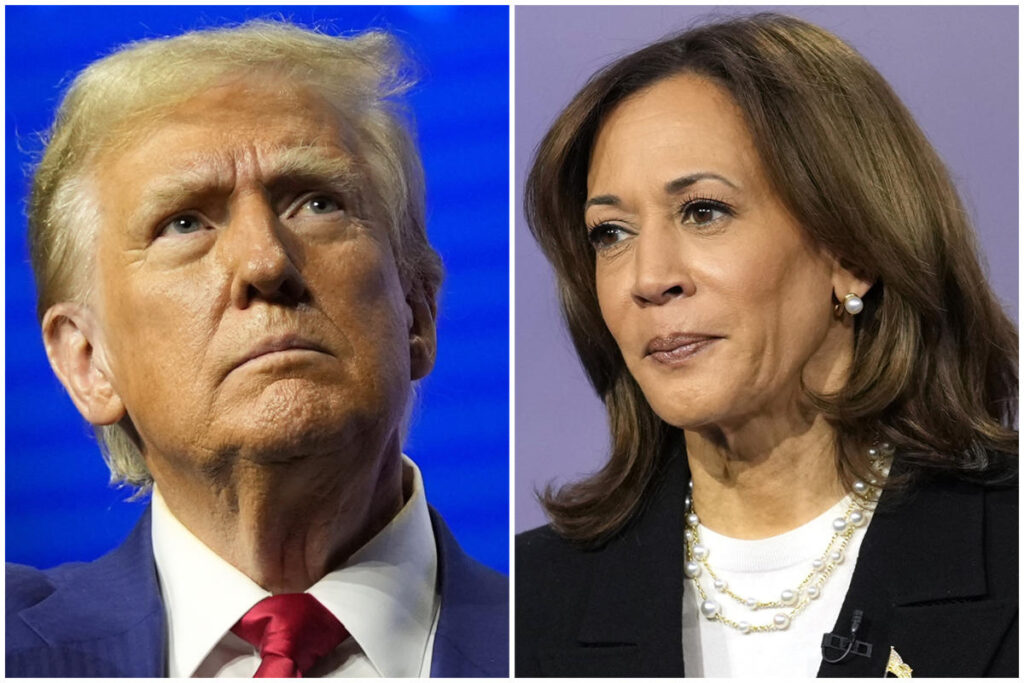The upcoming presidential election in the United States features two starkly opposing visions through the lenses of Democrat Kamala Harris and Republican Donald Trump. This election could redefine how America perceives itself and its role on the global stage. Since stepping in as the Democratic nominee, Harris has made it clear that her administration aims to build on the accomplishments of President Joe Biden, focusing on critical issues like middle-class tax cuts, climate change, and the restoration of abortion rights. Trump, taking a confrontational stance, is intent on pursuing a more aggressive and polarizing agenda characterized by mass deportation, expansion of his 2017 tax cuts, and reasserting executive power. Amidst this contrasting backdrop, both candidates assert their commitment to uplift the middle class and protect American values, but their methods and ideologies diverge significantly.
On the issue of abortion, Harris advocates for federal legislation to guarantee abortion access, emphasizing women’s autonomy and healthcare rights. She highlights how state-level restrictions have negatively impacted women’s health, using personal anecdotes to underscore the urgency of her campaign. In contrast, Trump reflects a more decentralised approach, expressing support for state-level regulations while boasting about his influence in appointing justices who rolled back Roe v. Wade. While initially vacillating, he has become more definitive in asserting that decisions regarding abortion restrictions should lie with the states—he neither supports a national ban nor seeks to block access to medication. Nevertheless, he remains vague on many aspects of the issue, leaving room for uncertainty about his administration’s views.
When it comes to climate and energy, Harris has modified her stance to include an allowance for fossil fuel practices, acknowledging the need for a transitional strategy while promoting renewable energy through components of the Biden administration’s Inflation Reduction Act. This measure aims to galvanize a shift towards greener energy solutions while employing young people through initiatives like the national Climate Corps. Trump, on the other hand, champions traditional energy policies, advocating for aggressive drilling and fossil fuel production. His approach entails significant tax breaks for energy companies and a return to policies that prioritize fossil fuels over renewables, indicating a clear divergence in priorities between the two candidates.
Democracy and governance also form a critical battleground in their campaigns. Harris has escalated her rhetoric against Trump, portraying him as a threat to democracy and often invoking her legal background to emphasize accountability and rule of law. Conversely, Trump continues to flout democratic norms, challenging the integrity of electoral processes and positioning himself against perceived enemies within the government. His proposed overhaul of the Justice Department highlights a broader vision to centralize more power in the presidency and reshape governance to his liking, raising concerns about the preservation of checks and balances. The contrasting views on the role of government reflect deeper ideological rifts in their overall policy proposals.
Immigration and border policy have surfaced as contentious issues. Harris seeks to revive bipartisan measures aimed at comprehensive reform, emphasizing pathways to citizenship and the need for humane treatment of migrants. She points to her enforcement experience and calls for more stringent criteria around asylum while ostensibly endorsing humane immigration processes. Trump’s rhetoric has reverted to a hardline stance, proposing massive deportation efforts and reinstating past administration policies. His vision is characterized by a sharp increase in border enforcement, punitive measures against those entering unlawfully, and proposals that suggest a rollback of established norms surrounding immigration rights and processes.
The candidates’ attitudes toward social issues further highlight the chasm between their platforms. Harris stands firm in her support of LGBTQ+ rights, positioning herself against what she characterizes as regressive efforts by Trump to roll back freedoms related to love and identity. Trump has taken a combative stance, advocating for exclusionary measures against transgender individuals, particularly in sports, and advocating for strict regulations against gender-affirming care. On foreign relations, their policies diverge as well; Harris has maintained aggressive support toward Ukraine amid Russian aggression, resonating with the broader Democratic consensus about safeguarding international alliances. Meanwhile, Trump’s isolationist rhetoric raises eyebrows, as he contemplates re-evaluating U.S. commitments to NATO and proposing negotiations that may require concessions from Ukraine, underlining a stark ideological divide that could shape not only national policy but also international relations for years to come.
In summary, the forthcoming election encapsulates a pivotal moment in American politics, where two candidates represent fundamentally opposing philosophies regarding governance, social issues, and international strategy. Harris’s approach is rooted in expanding civil liberties and pursuing a progressive agenda framed around long-term social equity, while Trump’s platform is predicated on a return to nationalist and populist ideals that prioritize traditional values. How voters perceive these candidates’ visions for the future will undoubtedly influence both domestic policies and America’s standing in the global arena, leading to consequences that could resonate for generations. Ultimately, the election will not only reflect the public’s immediate preferences but also potentially reshape the trajectory of American democracy, civil rights, and international relations.

